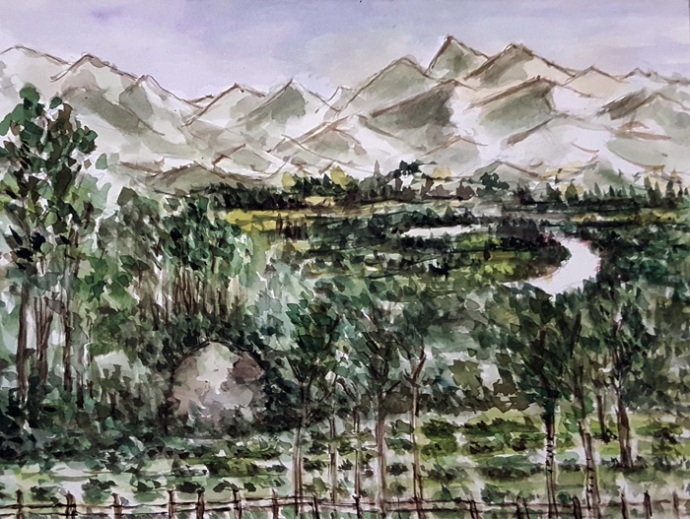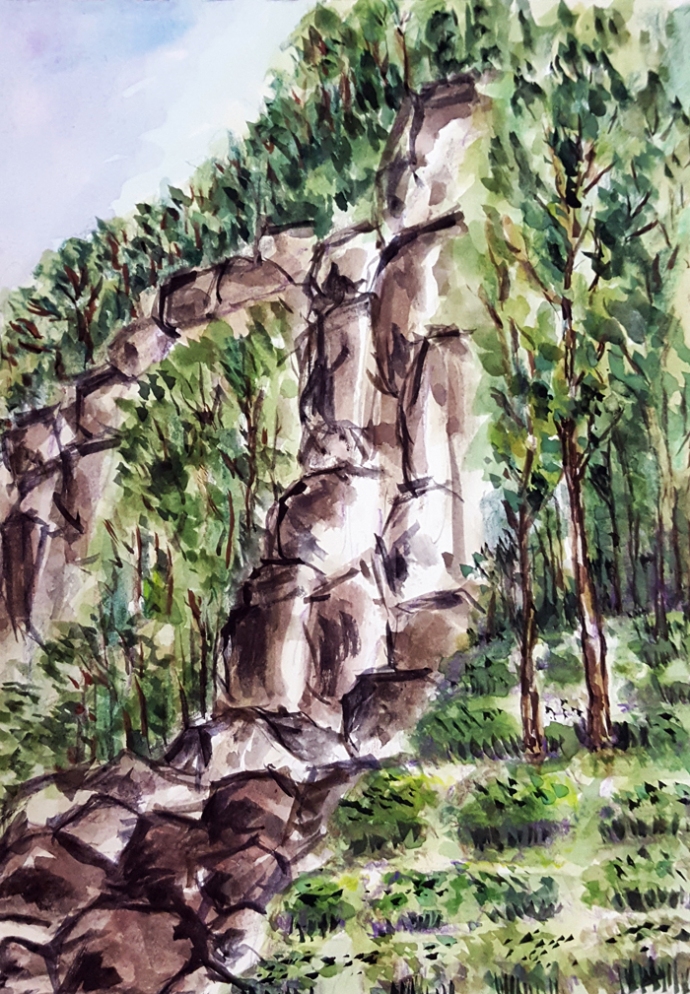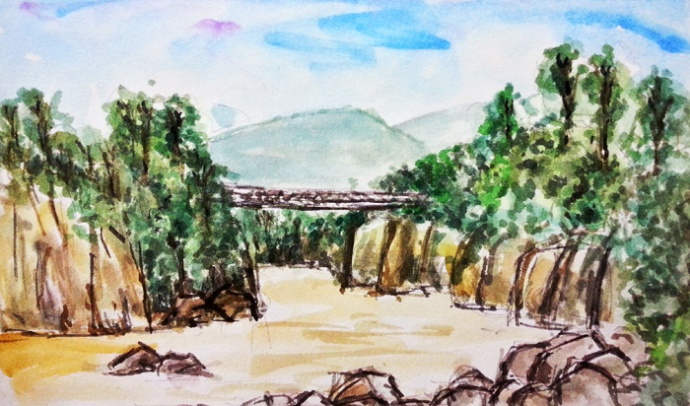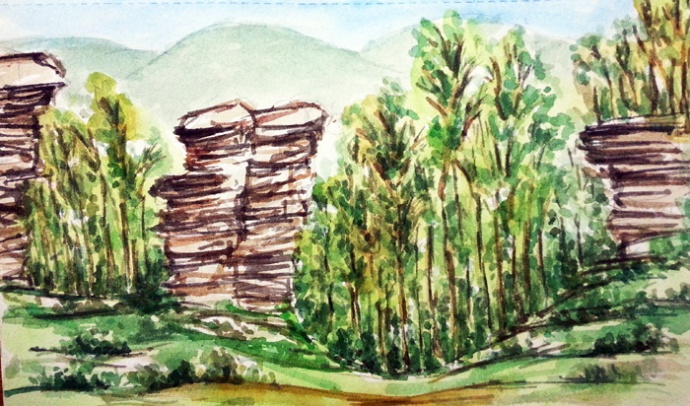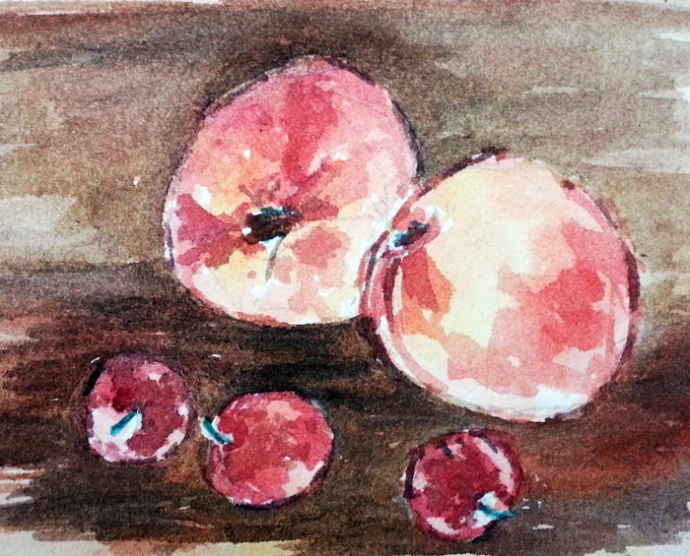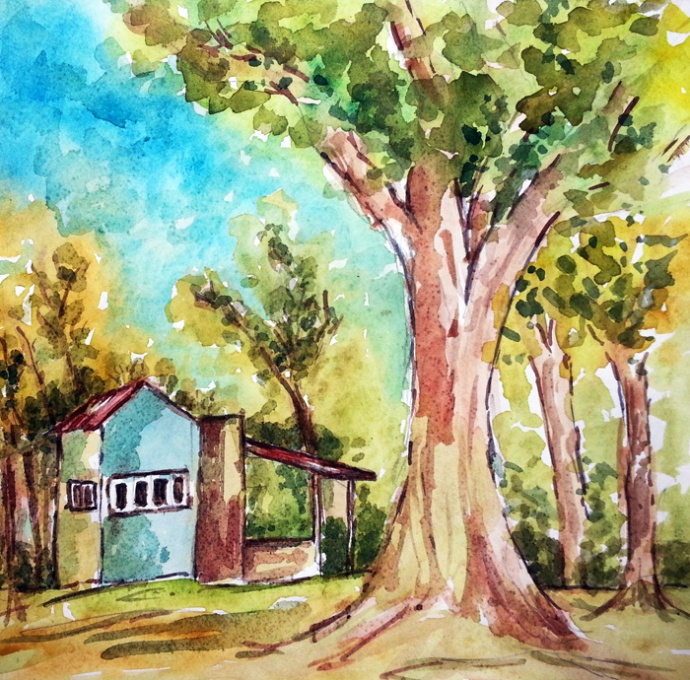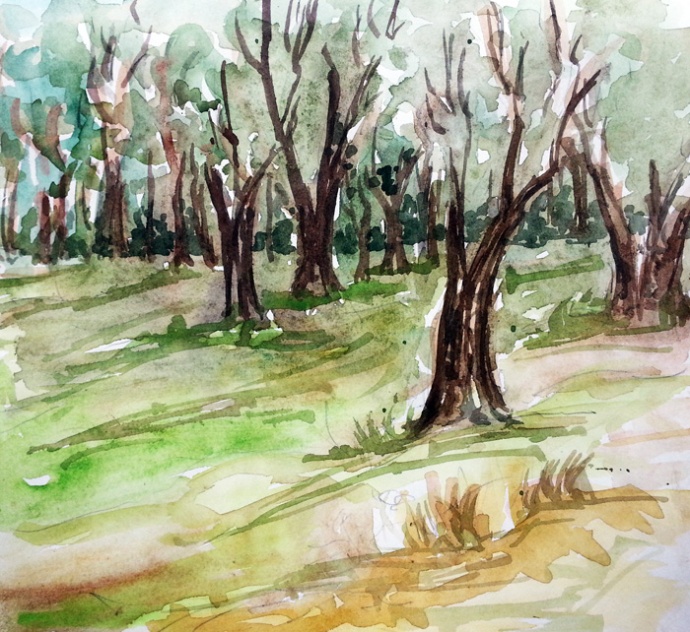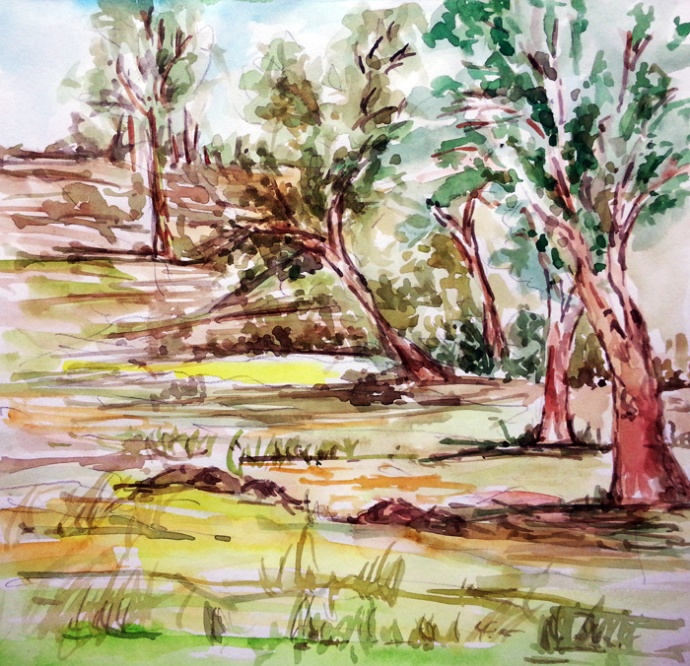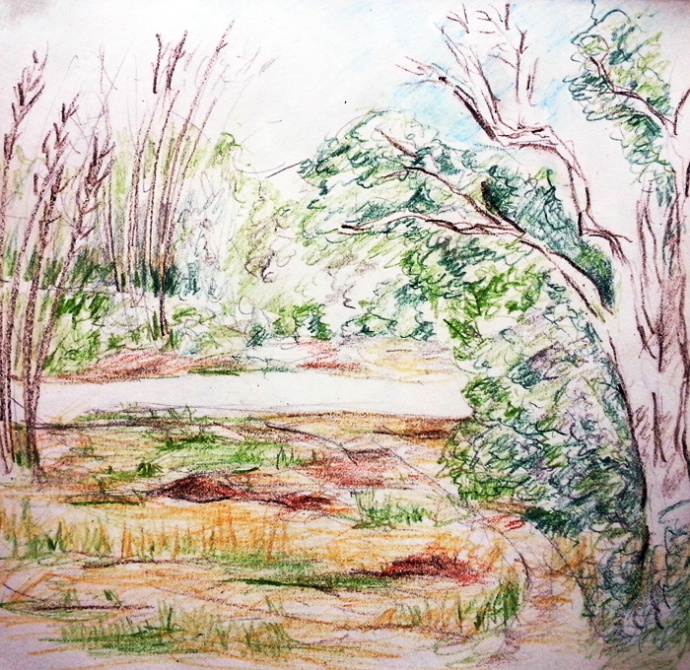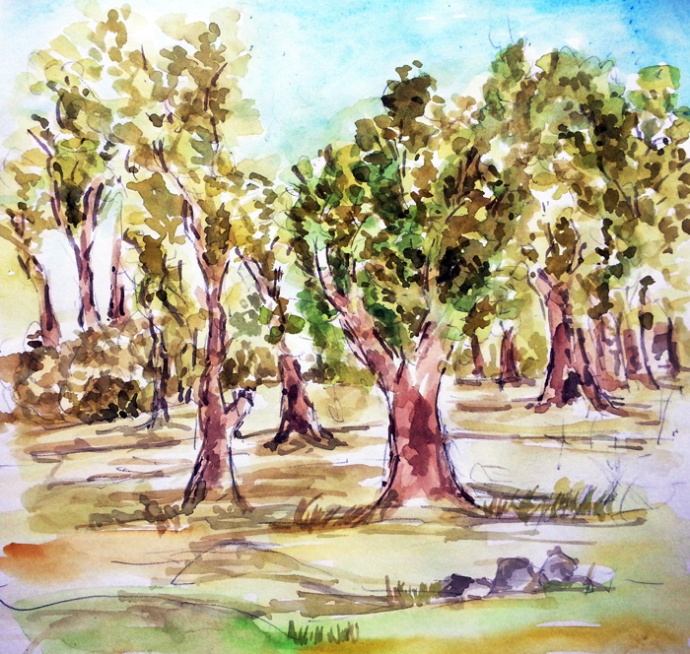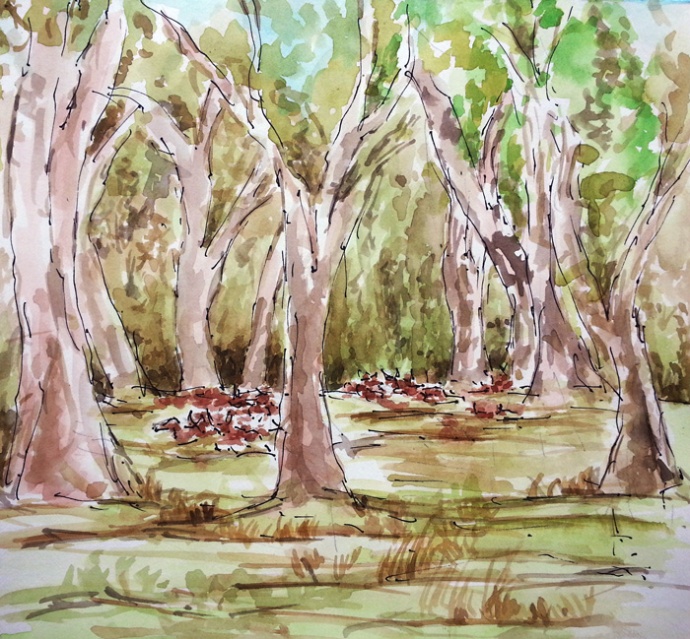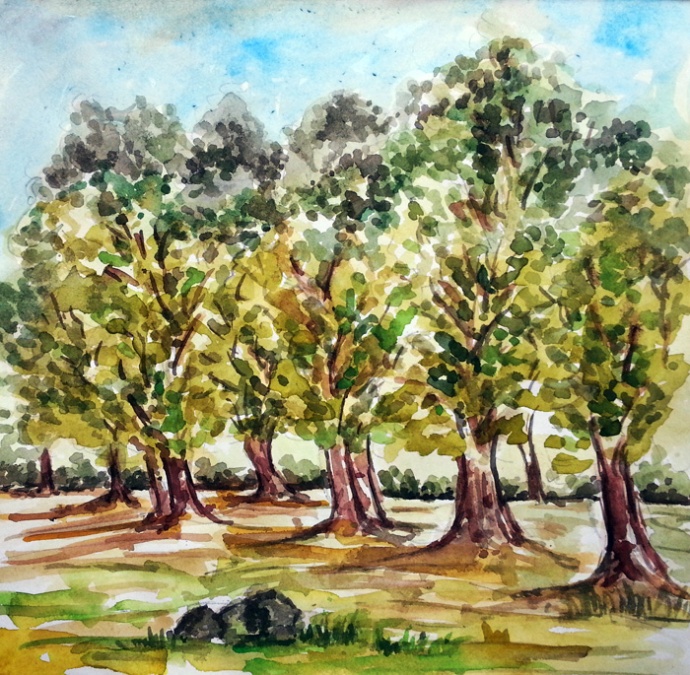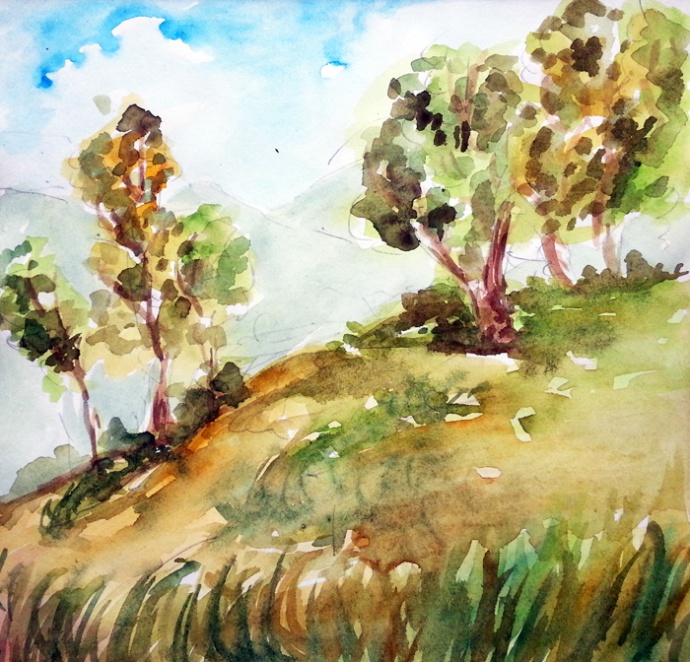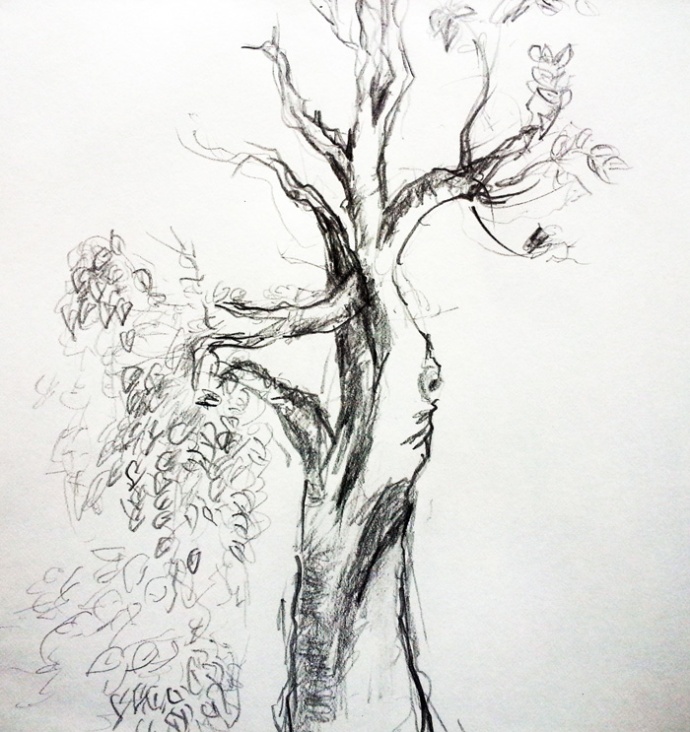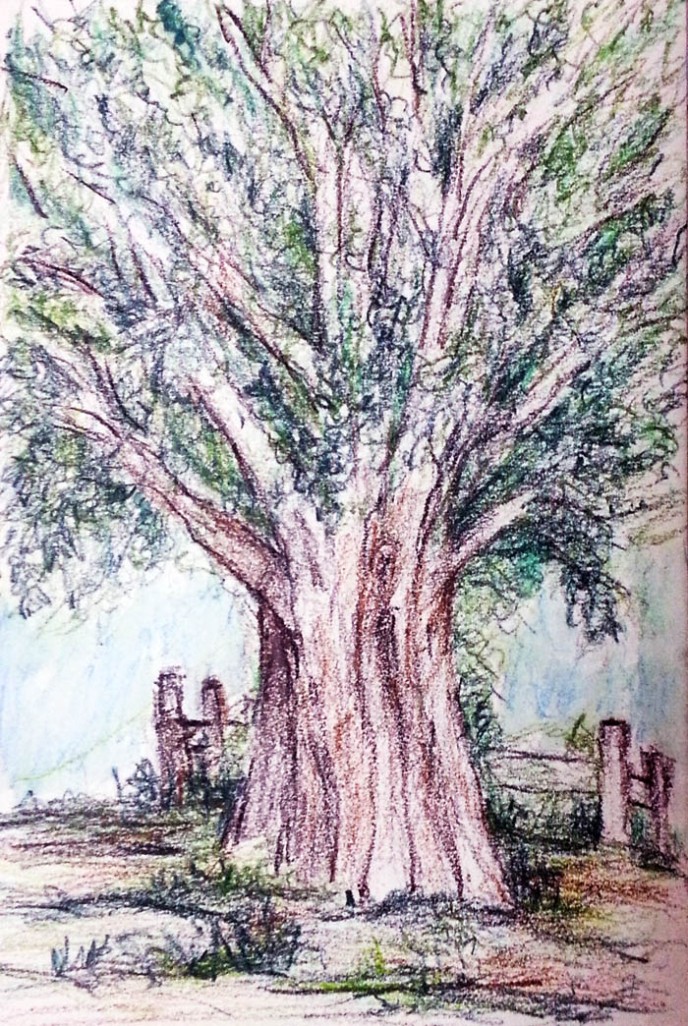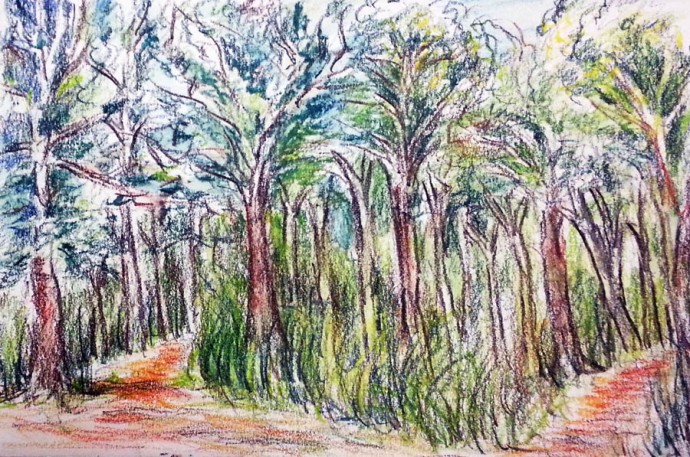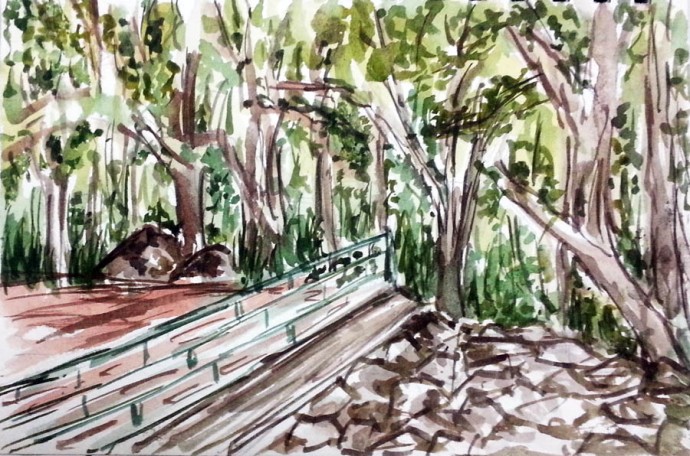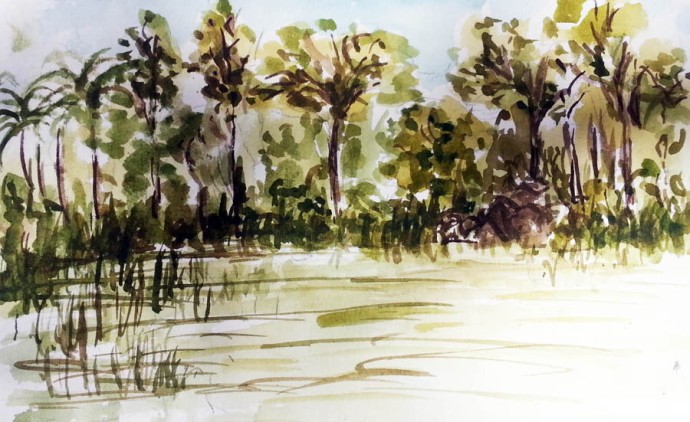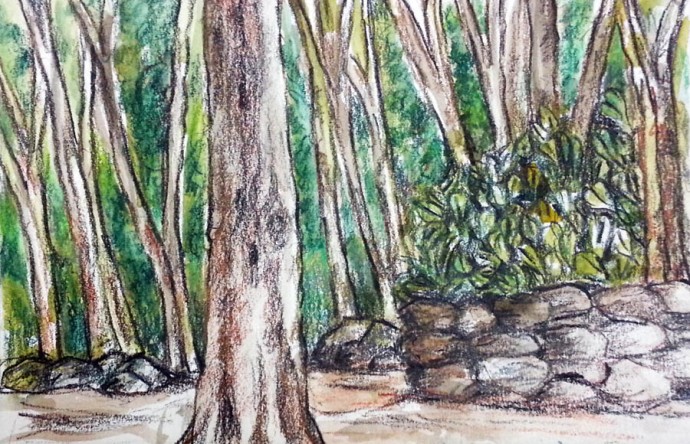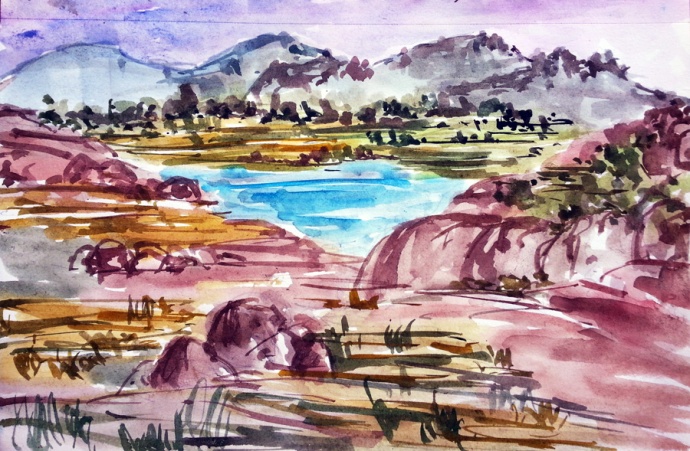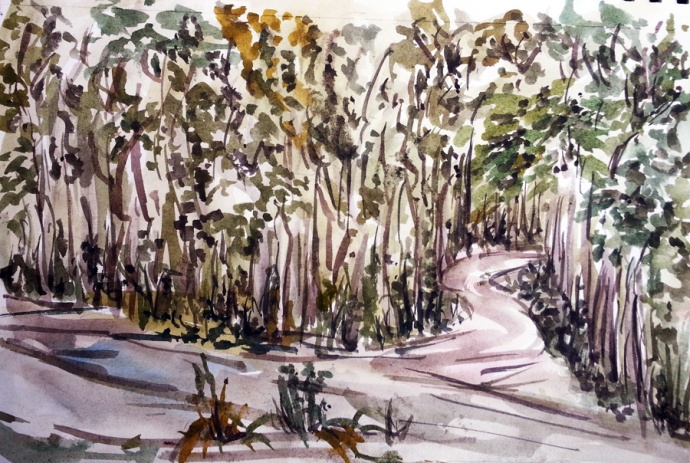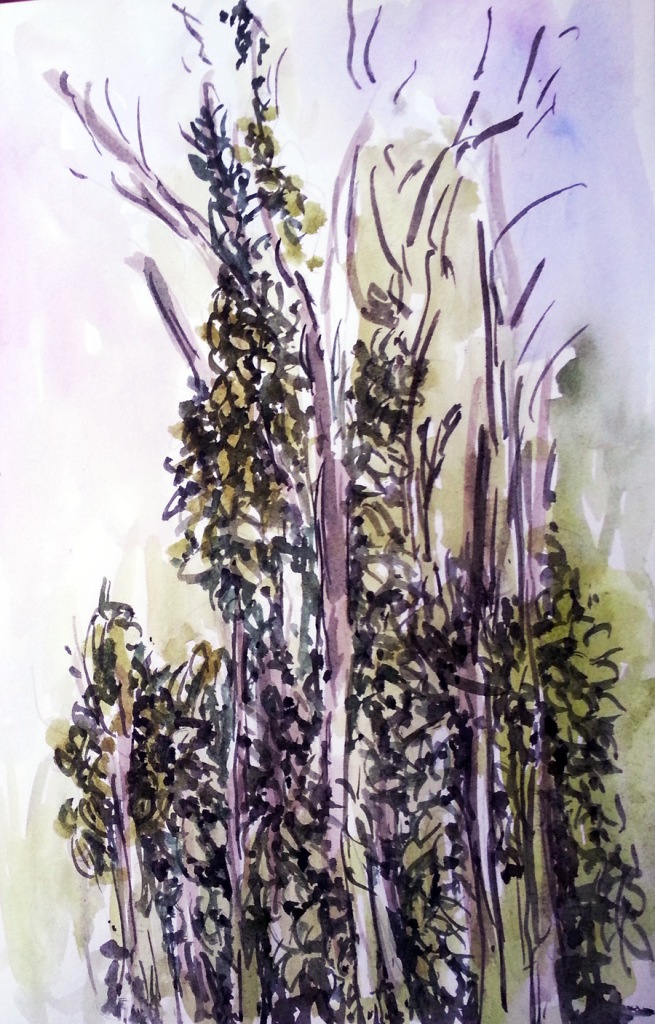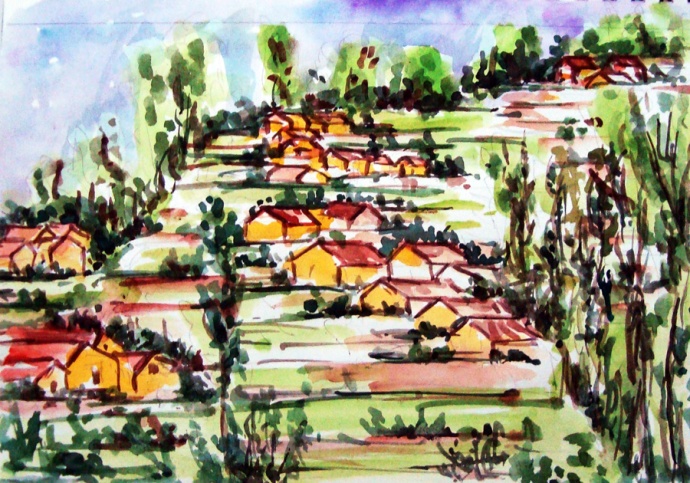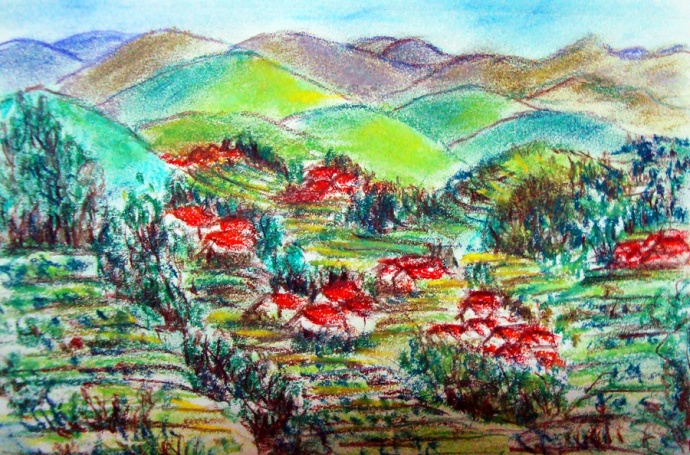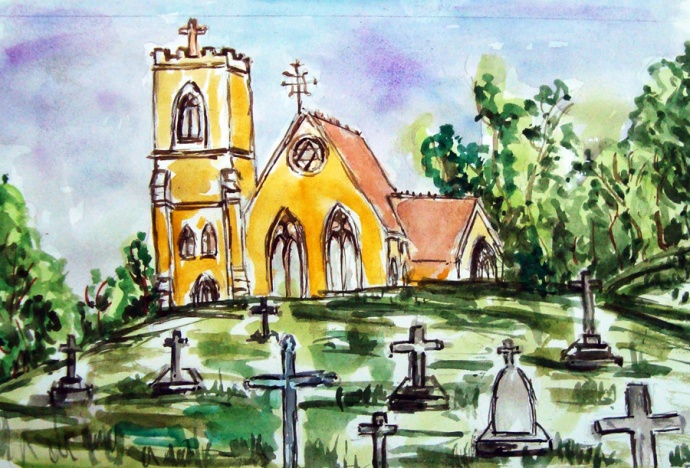Rudrapur, is a city in Uttarkhand (uttara-northern, khand-land). The city is located in the fertile Terai region of northern India that is crisscrossed by rivers which flow from the Himalayas. On a clear day the Kumaon ranges of Himalayas can be sighted like a misty dream.
My husband lives in an apartment that oversees a mustard field. A railway line runs along the apartment block and on the other side stretches sugarcane fields and woods filled with poplar trees.

It was winter in Rudrapur when I visited, and I took long walks to keep myself warm during the day. I left home soon after breakfast and came back for lunch, went out again till late evening to ramble through fields and visit villages tucked behind woods and paddy fields. This became my routine everyday.
There was hectic activity in the fields. It was harvest time for sugarcane and green peas. Tractors were loaded with harvested sugarcanes and the pea plants were hurled to the backs of bicycles and tricycles. The peas were shelled overnight and taken to the market the next day morning.


I walked past farmsteads that grew wheat. Poplar trees formed boundaries to farms and villages.

Poplars are deciduous trees and were bare, their thin fingers pointing to the sky.
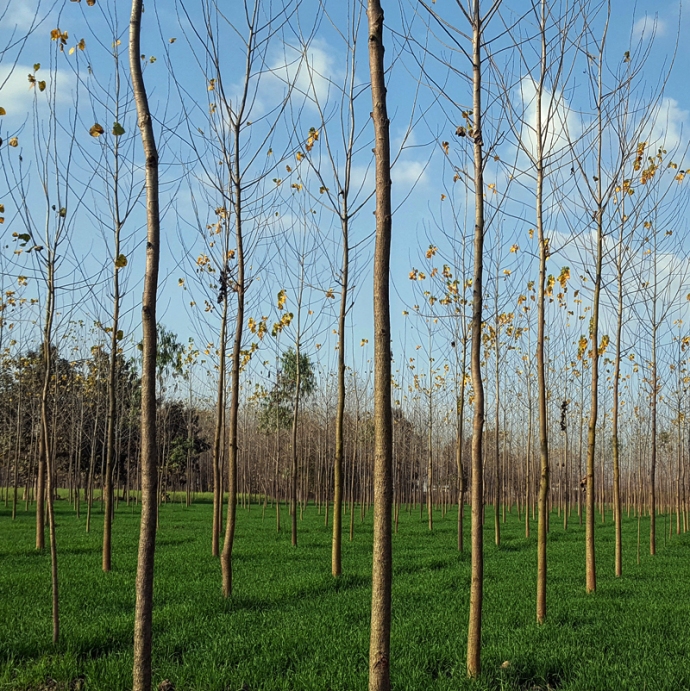
I sat at the edge of the woods and painted these trees.

It was my second day outdoors. A young man rode past on his bicycle, he came back.
‘I saw you near Fauji Matkota yesterday,’ he said.
I showed him the painting from the previous day. He was curious to know about me, why I had walked so far.
‘It is cold inside the house, and it is warm and beautiful out here.’
He nodded as he looked at my other paintings from the sketch book. He showed me the water color painting of the sea.
‘Where is this place?’
‘Near Chennai. Have you heard of Madras?’
He flipped through the pages in the book, looked at the paintings from my travels. As if he finally discerned what I do with my time, he pointed ahead.
‘Come to my village Burrarani tomorrow, there are beautiful fields that you can paint.’
We chatted for a while, he told me that he owned a tractor and lent his services during harvest time. He brought my attention to the poplars, showed that the trees were planted in perfect rows.
‘I run my tractor between the trees where wheat paddy is grown.’
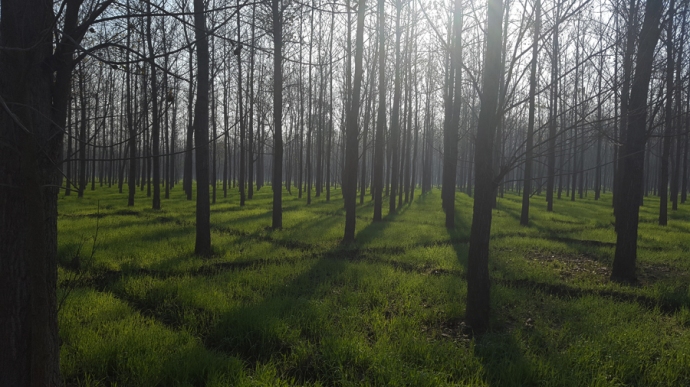
The next day I went to Burrarani, and painted a paddy field and the poplars that stretched beyond. I did not meet the young man. He told me the previous day that he had a job in a tinkering shed in Rudrapur when there was no work for him in the farm.


